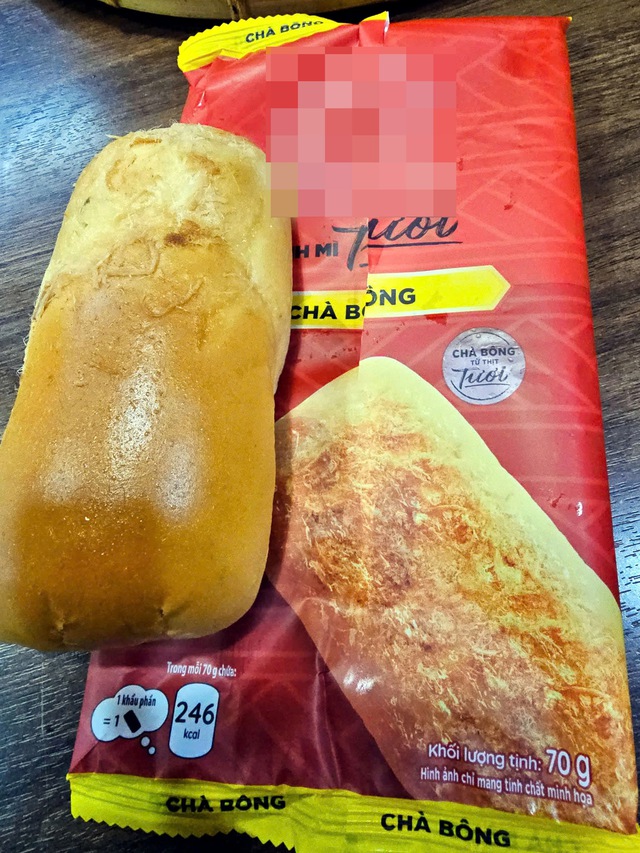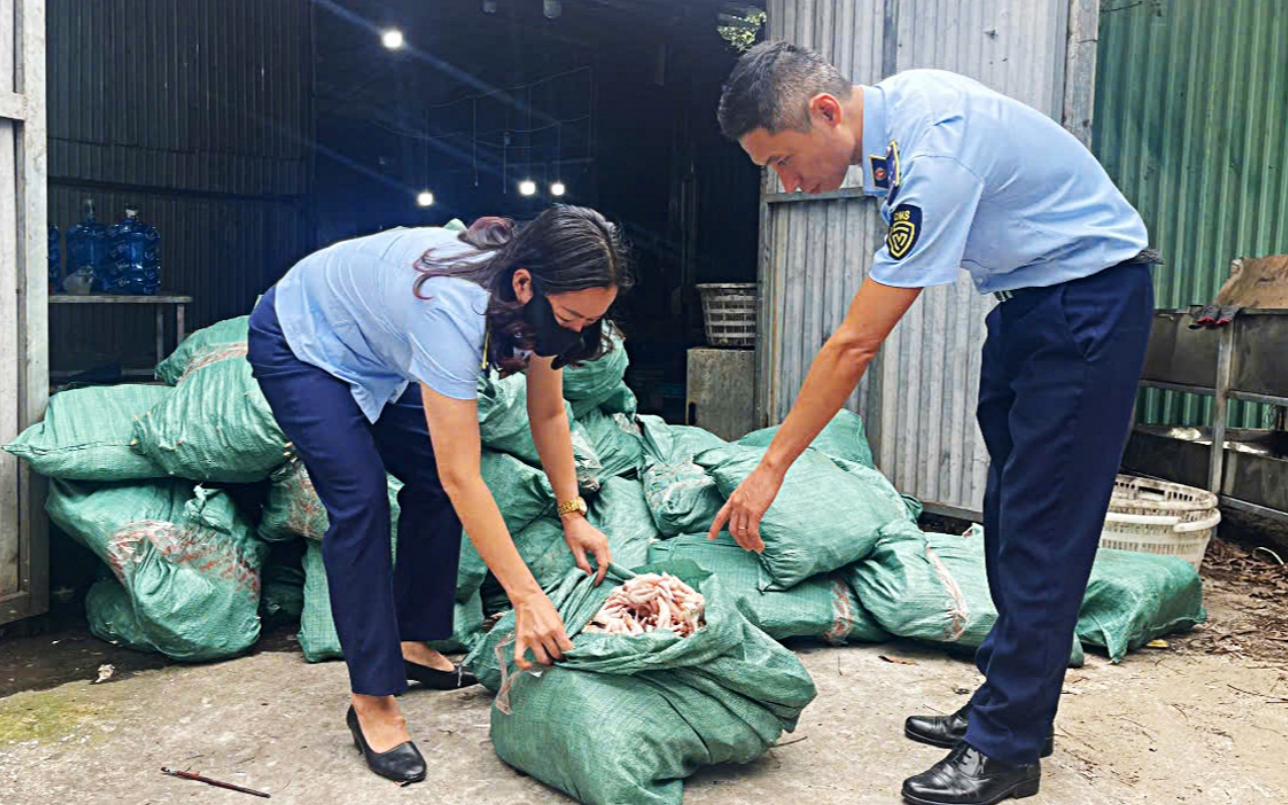
A shredded pork bun lies next to its packaging. Photo: H. Nguyen
Lately, local media have reported frequently on the crackdown on counterfeit goods, imitations, and substandard products.
In light of this, I would like to raise another related concern: the way product packaging in Vietnam is increasingly designed to mislead consumers — an issue that, in my opinion, has not received adequate attention from regulatory authorities.
For example, I recently bought a package of shredded pork buns like the one shown in the above photo.
The packaging displayed a delicious, nutritious bun filled with a generous amount of shredded pork.
But when I opened it, there were barely a few strands inside.
Yes, the packaging did include the disclaimer: "Images are for illustrative purposes only."
However, shoppers often base their decisions on the appealing images on the package.
Once they have bought the product and opened it, they will only find that it looks nothing like the picture. They can't help but feel deceived.
This, to me, is a clear case of misleading the consumer.
I felt like I had purchased a 'painted bun' — something that looks good in pictures but fails to deliver in reality.
What I experienced is hardly unique. Many people have likely gone through similar situations multiple times.
Over time, consumers begin to console themselves with thoughts like, "It's just an advertisement image, don't take it seriously."
Even when the product turns out disappointing, they often accept it and continue buying it again.
It has become a kind of resignation, a passive acceptance that the actual product will fall short of the glamorous image on the packaging, even though it was precisely that image that convinced them to spend money in the first place.
Of course, images can be enhanced or color-adjusted to make a product look more appealing.
But marketing images must still be truthful and reflect the actual quality of the product inside.
This is especially important for food products, where visuals that imply nutritional quality should be accurate and not misleading.
I have learned that in Japan, companies can be fined if the image on the packaging does not match the actual product.
I believe that as Vietnam moves to tighten control over product quality, regulatory agencies should also take stronger action to curb the misuse of 'illustrative images' on packaging.



Max: 1500 characters
There are no comments yet. Be the first to comment.